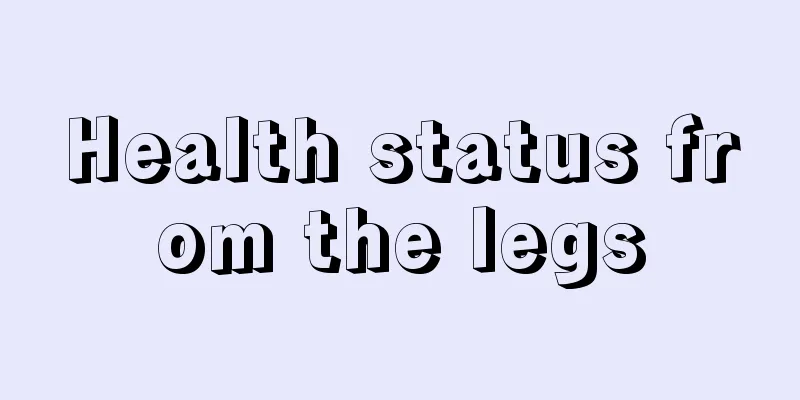Health status from the legs

|
The legs, also known as the lower limbs, are the part of the human body that connects the buttocks to the feet. They can be roughly divided into two parts: the thigh and the calf. The thigh and calf are divided by the knee. The part above the knee is called the thigh, and the part below the knee is called the calf. The main function of the legs is to support the body and walk. It is an integral part of the human body, so many diseases can also be reflected in the legs. 2. The muscles of the lower limbs are stiff and cannot be straightened or flexed, or the knee joints are stiff and cannot be flexed or extended. This is common in sequelae of cerebral stroke, rheumatoid arthritis, bone hyperplasia, etc. 3. The left or right upper and lower limbs become paralyzed and unusable, which is called hemiplegia, also known as hemiplegia. It is often seen as a sequela of stroke or due to qi deficiency, blood stasis, and meridian obstruction. 4. People who walk with heavy and weak steps often have wasting or atrophy of the inner thigh muscles, which is often accompanied by reproductive decline and sexual dysfunction. 5. Swollen knee joints can be seen in rheumatoid arthritis, joint cavity effusion, or swelling caused by falls and injuries. They are mostly caused by deficiency of qi and blood or liver and kidney. 6. People who place their left leg on top of their right leg and often have a red face are prone to diseases such as arteriosclerosis, hypertension and cerebral hemorrhage. 7. People who sleep with their knees bent at night are prone to respiratory or gastrointestinal diseases. 8. Women who experience limb cramps during menstruation and recover after menstruation are mostly suffering from blood deficiency and inability to nourish the tendons. 9. Sudden fainting followed by convulsions of the limbs, accompanied by drooling, eyes looking up, clenched teeth, or pig- or sheep-like sounds coming from the mouth is called epilepsy, commonly known as epilepsy. 10. If the limbs twitch, accompanied by stiffness of the neck and back, or even opisthotonos, and spasms of the facial muscles causing a bitter smile, and the condition recurs repeatedly, it is often a tetanus emergency. 11. People who are used to putting their left leg on their right leg have longer left legs and are prone to gastrointestinal diseases. 12. People who are used to putting their right leg on their left leg have longer right legs and are prone to heart diseases. The above is a summary of how to look at your health status from the perspective of your legs. I hope it will be helpful to you! Please continue to follow Ziwei Mansion Xiong Zhanghao for more information! |
Recommend
What to do when Jianxiashui encounters the phase of a husband-killer? How to resolve the phase of a husband-killer
In the sixty-year cycle of the five elements, Jia...
What kind of person is worthy of love?
A person's facial features are always influen...
Does having a mole around the belly button mean you will attract bad luck in love?
Moles can grow not only on the face, but also any...
Analysis of the fate of the four major moles on the lips
Moles can be divided into broad and narrow meaning...
What does the thickness of the lifeline represent?
The texture on everyone’s hands is different. Dif...
The market continues to fluctuate upward, beware of the risk of neckline correction
Author | Hashipi Analysis Team...
What does a man with a bright future look like on his palm?
What does a man with a bright future look like on...
Sun Hill to see personality: focus on reputation and status
Palmistry: The Sun Hill looks at personality: foc...
Can Bitcoin overcome its biggest obstacle — decentralization — and achieve the best governance?
Decentralization has been key to Bitcoin’s value ...
What does a mole on the palm mean?
What does a mole on the palm mean? There are seve...
Is it good for a man to have a cinnabar mole on the sole of his foot? What does it mean?
Everyone has moles on their face or body to a gre...
What does a cowardly man look like? Which men are timid?
The first impression that a cowardly man gives pe...
The richest man in the cryptocurrency world has a 100-fold return on his Bitcoin investment, worth $21 billion
#Bitcoin richest man earns 100 times on Bitcoin i...
Do people with round and thick noses have good luck with noble people and good fortune?
According to physiognomy, people with round and t...
Bitcoin: Anchor of Trust in the Ocean of Blockchain
Bitcoin possesses numerous properties, such as tr...









